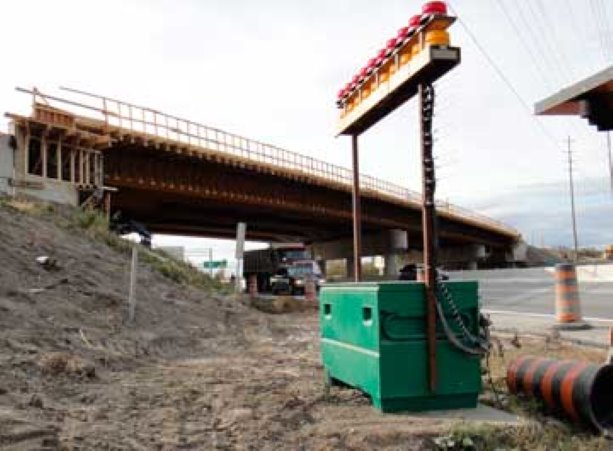In Ottawa contractors are increasingly retaining companies like Explotech Engineering to implement vibration monitoring programs — even on projects that don’t require them in the contract.
The demand for vibration monitoring at demolition and construction sites is growing as more contractors and owners learn from experience that the cost to repair damage caused to adjacent buildings and other structures such as waterlines is a price too high to ignore.
“At the end of the day they realize it protects them and the home owners (or adjacent property owners),” points out Jeff Corace, engineer, Explotech, an engineering specialist not only in explosions/blasting technology but also in vibration control.
“It’s pretty much becoming another form of due diligence around a project.”
Typically, vibration control is done with a series of seismographs attached to or near adjacent buildings or utility services such as waterlines. Measurements are taken of vertical, longitudinal and transverse ground movements.
But unlike some vibration consultants that require staff on site to take the measurements, Explotech uses an automated turn-key system. It allows the company to monitor in “soft” real time, meaning when a potentially damaging vibration occurs to adjacent properties at a demo or construction site, all parties involved are alerted within two or three minutes.
It’s a relatively new approach to vibration monitoring.
When vibrations exceed “trigger levels” (a number often stipulated in the contract), data is automatically transmitted to a server in Explotech’s office in Ottawa, says Corace. That information is immediately uploaded to a website and text messages and emails are sent to concerned parties.
The science of vibration technology is not new, but the ability to produce it in near real time is uncommon, Corace says. “Once that data is recorded, what is done with it and how it is shared/interpreted is the side of the industry that is starting to change.”
The advantage of automated or real time monitoring is that onsite personnel are not required. That can be a substantial cost savings on long-term projects, says Corace.
Take a highway under construction in a city, for example. Nearby homes might be monitored for construction vibrations over several months. Having personnel on site daily can cost ten times more than the price for automated monitoring, says Corace, adding that data from automated systems is distributed quickly to all parties with an invested interest. In Toronto, Corace says such vibration monitoring is ideal for high-impact roadwork, including Toronto Transit Commission work on tracks, and subway construction. Demolition of downtown buildings or buildings in high-density areas is another scenario.
Automated monitoring isn’t suited to every construction or demolition situation, however. “When you are piling adjacent to a gas line, for instance, and the seismograph has to be moved for every pile, than you have to have a person on site to do that.”
Toronto is one of the few cities with vibration legislation — Bylaw 514-2008. The bylaw limits vibrations to less than 25 millimetres per second (mps) in typical settings — even less (5 mps, for instance) in special cases where adjacent structures are particularly sensitive to any movement.
In cities without bylaws, a vibration consultant is sometimes retained to decide on vibration limits or the limits are written into the demolition or construction contract by the owner or general contractor, based on industry standards.
In Ottawa, for instance, limits are typically set at 50 mps or less, depending on proximity to buildings and types of structures, says Corace. Waterlines, however, might require limits of as low as 5 mps and seismographic equipment set up at “very close” historic buildings might be calibrated to trip at as low as 2 mps.
The engineer says that when limits are exceeded, vibratory equipment is often replaced on the jobsite with equipment that is less disruptive. “It happens on a fairly constant basis.”
Practices common in some cities are less so in others. While piles are commonly “vibrated into the ground” in many cities, in downtown Toronto the standard procedure is to make a hole with a caisson drill, and then insert the pile and backfill or grout into place, Corace says.



Recent Comments
comments for this post are closed